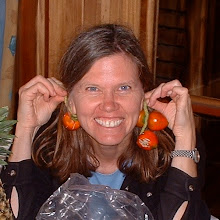As a long time avid knitter, I have built up quite a wardrobe of knit items for myself. Once in a while I do some knitting to donate. It is some of the most satisfying knitting there is. My current favorite group to donate to is Afghans for Afghans. In spite of the name, they have now tend to focus their emphasis to sending small garments such as socks, mittens, and hats for babies and children. A quote from their web site:
Save the Children says that providing a wool cap to a newborn is one of the most cost-effective techniques to ensure child survival in the first few months.
With the difficulty and expense of shipping all the generous donations they get, they realized they can keep a lot more people warmer with many small items.
This year I knit these baby socks for a campaign they ran. Aren't they cute?
Then I knit these mittens for someone about 7 or 8 years old. I think.
The great thing about knitting for donation is that the exact size is not critical. They will find someone that is the right size. Afghans for Afghans periodically announces campaigns when they have a group to partner with in Afghanistan. I encourage you to take part in one of their campaigns or find another group that accepts knitted donations. It will give you a lovely warm feeling. Here's a page on Ravelry that lists all kinds of organizations that distribute knitted items to people that need them.
Save the Children says that providing a wool cap to a newborn is one of the most cost-effective techniques to ensure child survival in the first few months.
With the difficulty and expense of shipping all the generous donations they get, they realized they can keep a lot more people warmer with many small items.
This year I knit these baby socks for a campaign they ran. Aren't they cute?
Then I knit these mittens for someone about 7 or 8 years old. I think.
The great thing about knitting for donation is that the exact size is not critical. They will find someone that is the right size. Afghans for Afghans periodically announces campaigns when they have a group to partner with in Afghanistan. I encourage you to take part in one of their campaigns or find another group that accepts knitted donations. It will give you a lovely warm feeling. Here's a page on Ravelry that lists all kinds of organizations that distribute knitted items to people that need them.






























